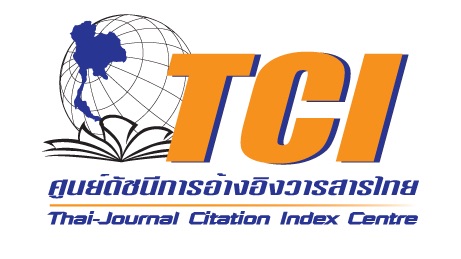The Wooden Ordination Halls and The Emergence of Communities Along the Gulf of Thailand’s Upper West Coast
Keywords:
The Wooden Ordination Halls, The Upper Western Gulf of Thailand, Vernacular ArchitectureAbstract
This article is the result of a study of the relationship between the period of the emergence of wooden ordination halls that is very popular in communities around the western Gulf of Thailand in the 24th-25th century, and the development of communities in the Tha Chin basin, Mae Klong basin, and Phetchaburi basin. The result indicated that the construction of these local wooden ordination halls is the solution to the floodplain environment problems and is related to the development of communities in the area on the west side of the Chao Phraya River. In other words, many temples with wooden ordination halls were built to be the center of various communities, both in the existing communities that have expanded into neighboring areas and the formation of new villages in the wasteland. The establishment of these communities and temples also related to the economic and social development of the area during the Rattanakosin period, such as canalizing canals from Bangkok to this area, the agricultural expansion due to the Bowring Treaty in the reign of King Rama III, and the development of railway routes to the western and southern. The result also showed the appearance and methods of building different wooden ordination halls in each area as seen in the re-use of local artifacts, and the moved artifacts from Bangkok, such as the miniature metal Buddha image and small granite boundary markers or Sema, in line with the characteristics of the local architectural wood ordination halls that were built simply, not decorated, and are suitable for small communities. The wooden ordination hall represents the spatial development and community formation in the area around the western upper Gulf of Thailand since the late 24th century.
References
คาร์ล บ็อค. (2562). ท้องถิ่นสยามยุคพระพุทธเจ้าหลวง. ศรีปัญญา.
เจ้าพระยาทิพากรวงษ์มหาโกษาธิบดี (ขำ บุนนาค). (2482). พระราชพงศาวดารกรุงรัตนโกสินทร์ รัชกาลที่ 2. กรมศิลปากร.
ชุติมา มีแสง. (2554). อุโบสถไม้ เมืองสมุทรสาคร: สถาปัตยกรรมพื้นถิ่นและความสัมพันธ์ระหว่างชุมชน [การศึกษาค้นคว้าเฉพาะบุคคลหลักสูตรศิลปศาสตรบัณฑิต ภาควิชาประวัติศาสตร์ศิลปะ คณะโบราณคดี]. มหาวิทยาลัยศิลปากร.
นฤพนธ์ ด้วงวิเศษ และบรรณาธิการ. (2561). สาครบุรีจากวิถีชาวบ้าน: การเปลี่ยนผ่าน วิถีชีวิตท้องถิ่นในลุ่มน้ำท่าจีน จังหวัดสมุทรสาคร. ศูนย์มานุษยวิทยาสิรินธร.
ประภัสสร อินธิเสน. (2523). บทบาทของสุขาภิบาลที่มีต่อการปกครองตนเองในท้องถิ่น ระหว่างปี พ.ศ. 2441-2476 [วิทยานิพนธ์ปริญญาอักษรศาสตรมหาบัณฑิต สาขาวิชาประวัติศาสตร์เอเชียตะวันออกเฉียงใต้ ภาควิชาประวัติศาสตร์ บัณฑิตวิทยาลัย]. มหาวิทยาลัยศิลปากร.
ประภัสสร์ ชูวิเชียร. (2561). อยุธยาในย่านกรุงเทพฯ ศิลปกรรมที่สัมพันธ์กับแม่น้ำลำคลอง พิมพ์ครั้งที่ 2. มติชน.
ศักดิ์ชัย สายสิงห์. (2551). งานช่าง สมัยพระนั่งเกล้าฯ. มติชน.
สถาบันดำรงราชานุภาพ. (2555). การเสด็จตรวจราชการหัวเมือง ของสมเด็จพระเจ้าบรมวงศ์เธอ กรมพระยาดำรงราชานุภาพ. สถาบันดำรงราชานุภาพ.
สิริวรรณ สิรวณิชย์. (2561). การศึกษาสำรวจสถานภาพทางความรู้ทางประวัติศาสตร์ท้องถิ่น : ชุมชนบ้านท่าจีน สมุทรสาคร [รายงานการวิจัยสาขาวิชาประวัติศาสตร์ท้องถิ่น คณะโบราณคดี]. มหาวิทยาลัยศิลปากร.
สมเด็จพระเจ้าบรมวงศ์เธอ กรมพระยาดำรงราชานุภาพ. (2555). การเสด็จตรวจราชการหัวเมือง ของสมเด็จพระเจ้าบรมวงศ์เธอ กรมพระยาดำรงราชานุภาพ. สถาบันดำรงราชานุภาพ.
Downloads
Published
How to Cite
Issue
Section
License
Copyright (c) 2023 Journal of Human and Society, Sisaket Rajabhat University

This work is licensed under a Creative Commons Attribution-NonCommercial-NoDerivatives 4.0 International License.







